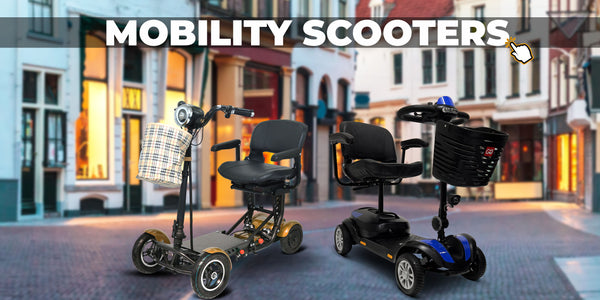Can I ride the mobility scooter in the street?
1. Understanding Mobility Scooters:
2. Street Legality of Mobility Scooters:
The legality of riding a mobility scooter on the street varies depending on local regulations and considerations:
a. Pavement Usage:
In many areas, mobility scooters are primarily intended for pavement or sidewalk use. They are considered pedestrian aids, allowing users to navigate sidewalks safely.
b. Road Usage Regulations:
The permissibility of riding a mobility scooter on the street or road is subject to local traffic laws and regulations. Some regions permit mobility scooters on roads, provided they adhere to specific guidelines.
c. Speed Limitations:
When riding on the street, speed limitations for mobility scooters might apply. In certain areas, there could be speed restrictions, often limiting them to a maximum speed to ensure safety.
d. Road Safety Considerations:
Safety is paramount when considering using a mobility scooter on the street. Riders must adhere to traffic rules, use designated lanes where available, and exercise caution to ensure their safety and that of others.
 3. Street Accessibility and Infrastructure:
3. Street Accessibility and Infrastructure:
Street accessibility for mobility scooters may vary across different locations. Some cities provide dedicated lanes or accessible routes for individuals using mobility aids, enhancing their street usability.
4. Consult Local Authorities:
Given the variation in regulations, it's advisable for users to consult local authorities or transportation departments to understand specific guidelines and restrictions regarding mobility scooter usage on streets.
5. Safety Measures for Street Usage:
When riding a mobility scooter on the street, adhering to safety measures is crucial:
- Using lights and reflectors for visibility, especially in low-light conditions.
- Following traffic signals and signs to ensure safe navigation.
- Wearing appropriate safety gear, including helmets, if necessary or recommended.
In conclusion, the legality of riding a mobility scooter on the street varies based on local regulations and safety considerations. While they are primarily intended for pavement use, some regions permit their street usage within specified guidelines. Consulting local authorities and prioritizing safety measures are essential steps for individuals considering using mobility scooters on streets, ensuring compliance with regulations and enhancing safety for themselves and others.














